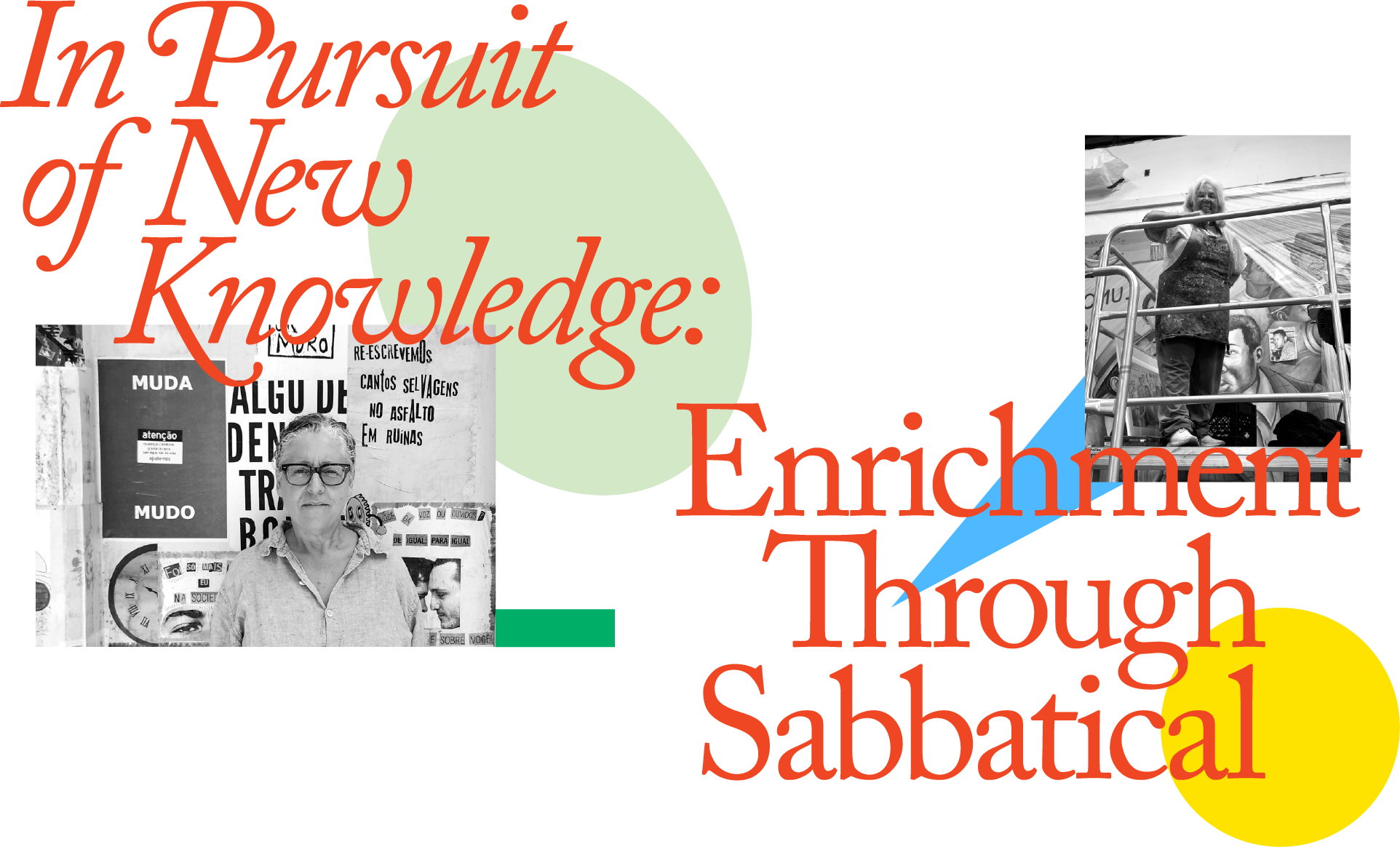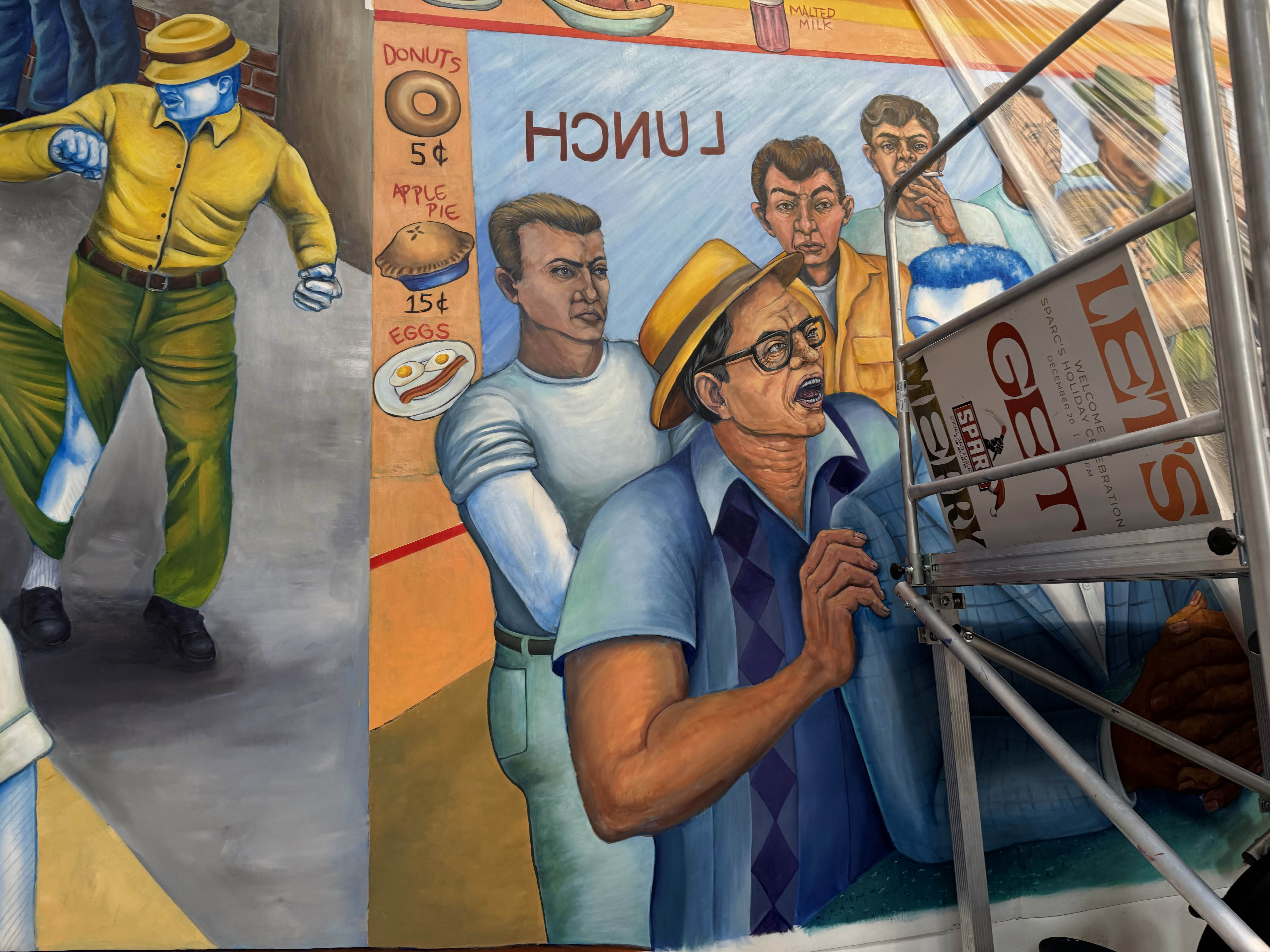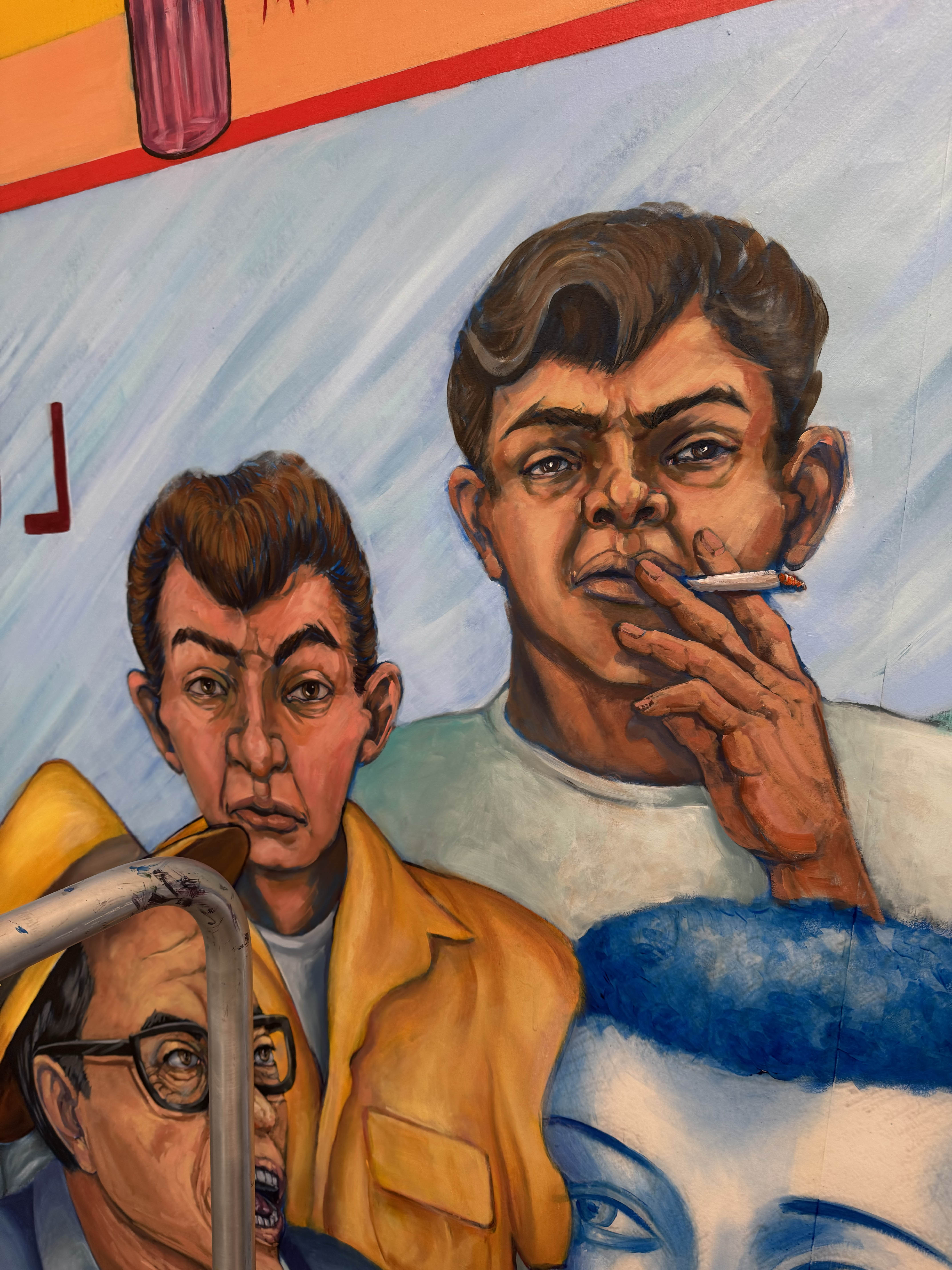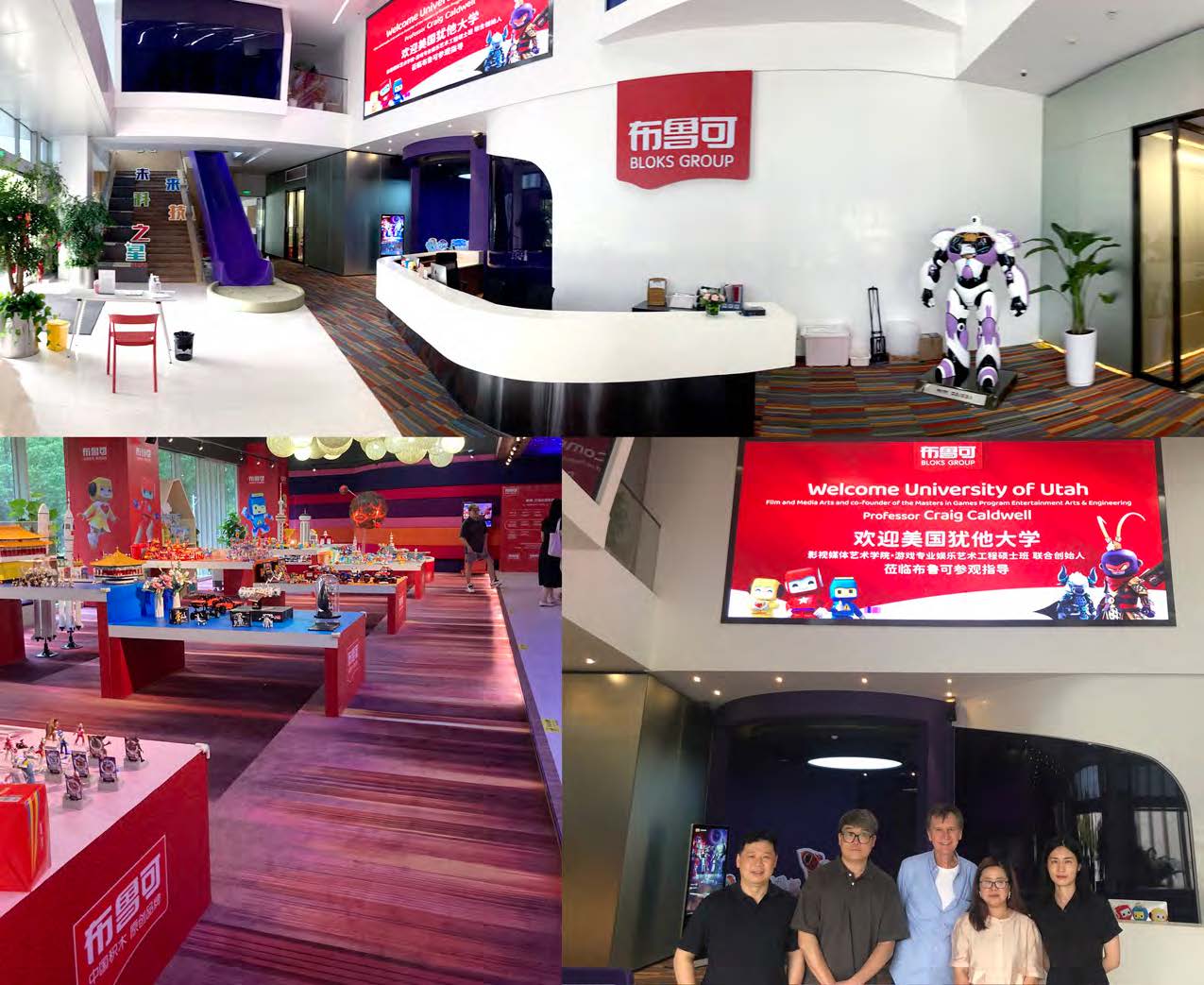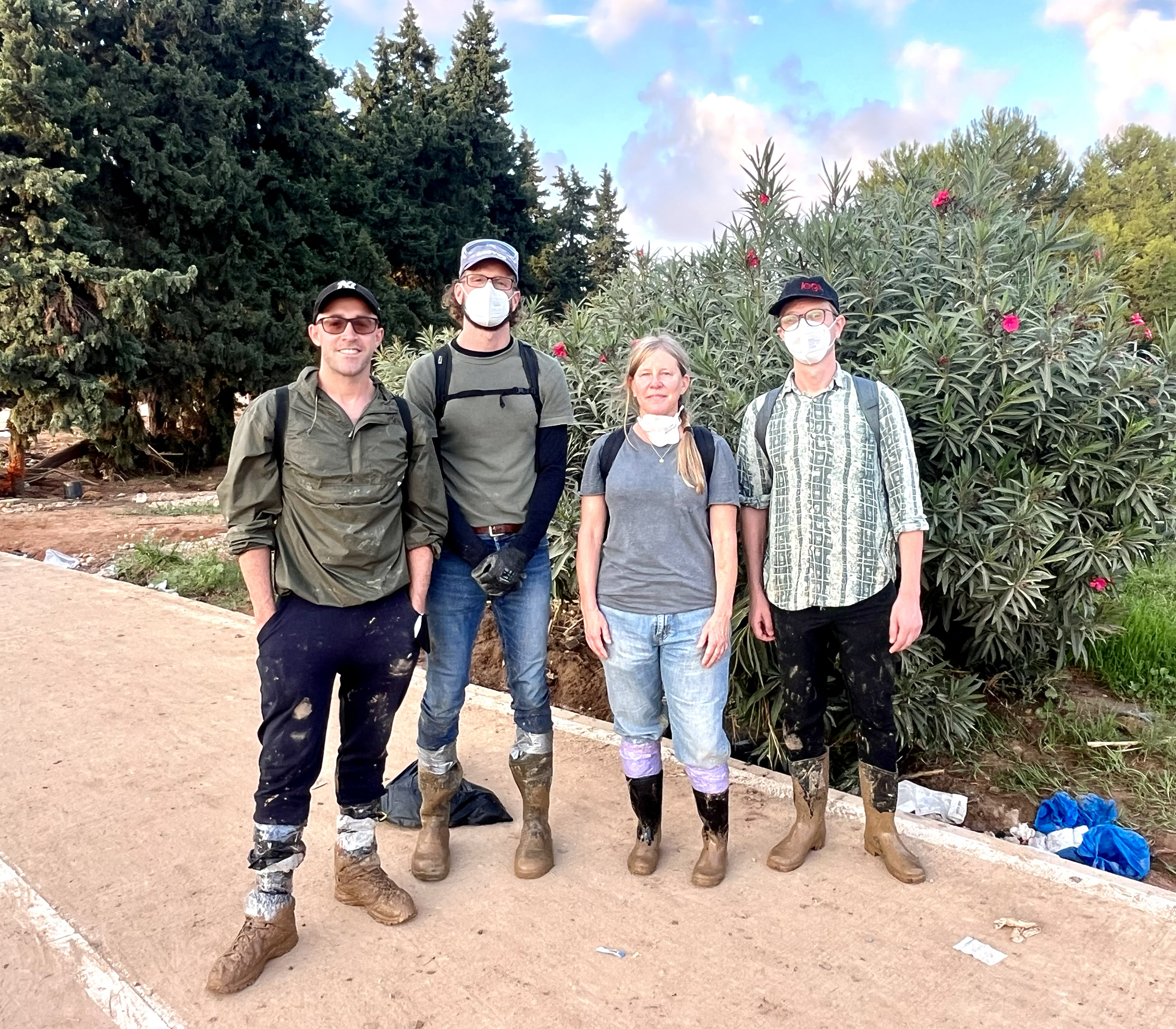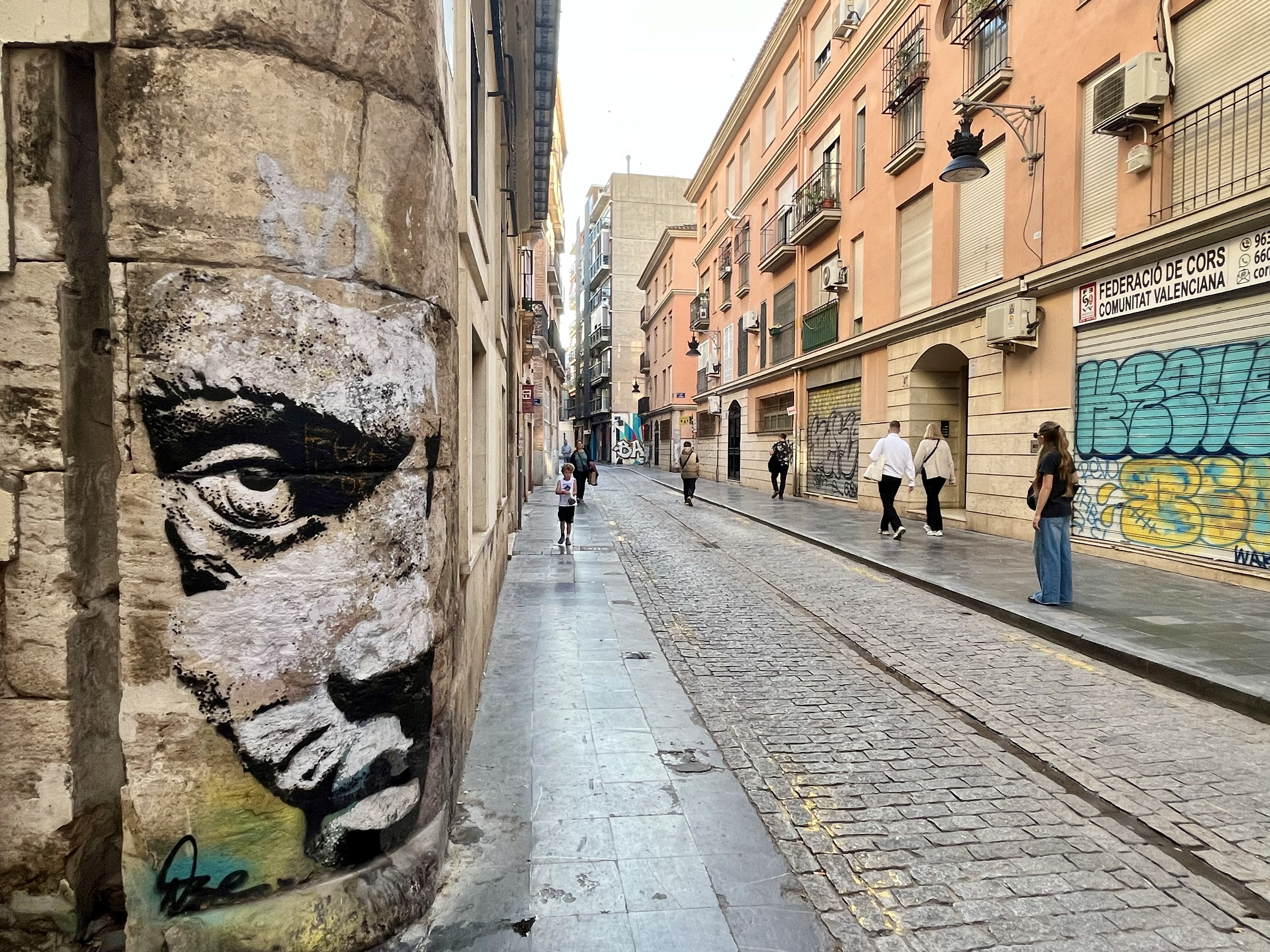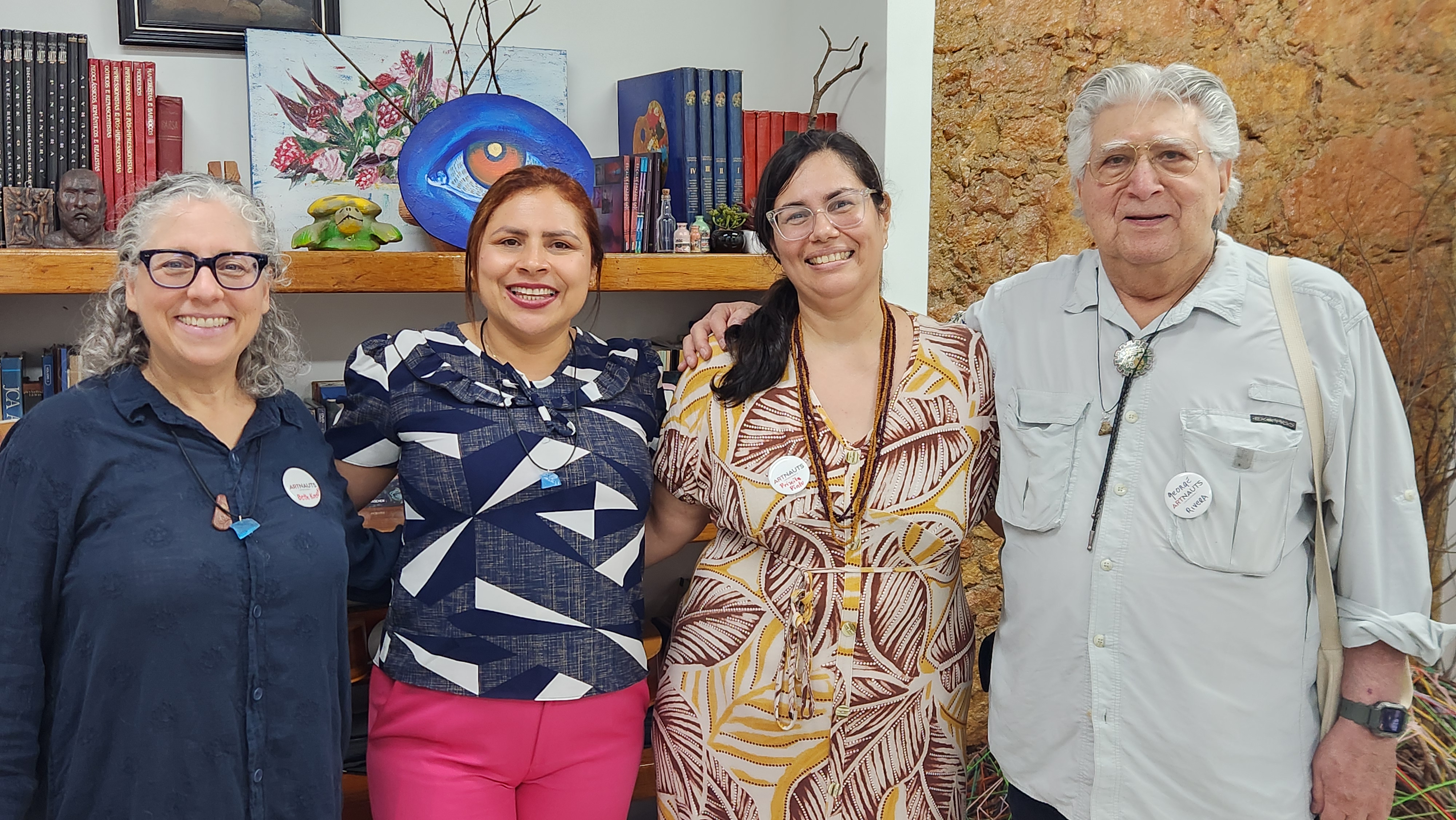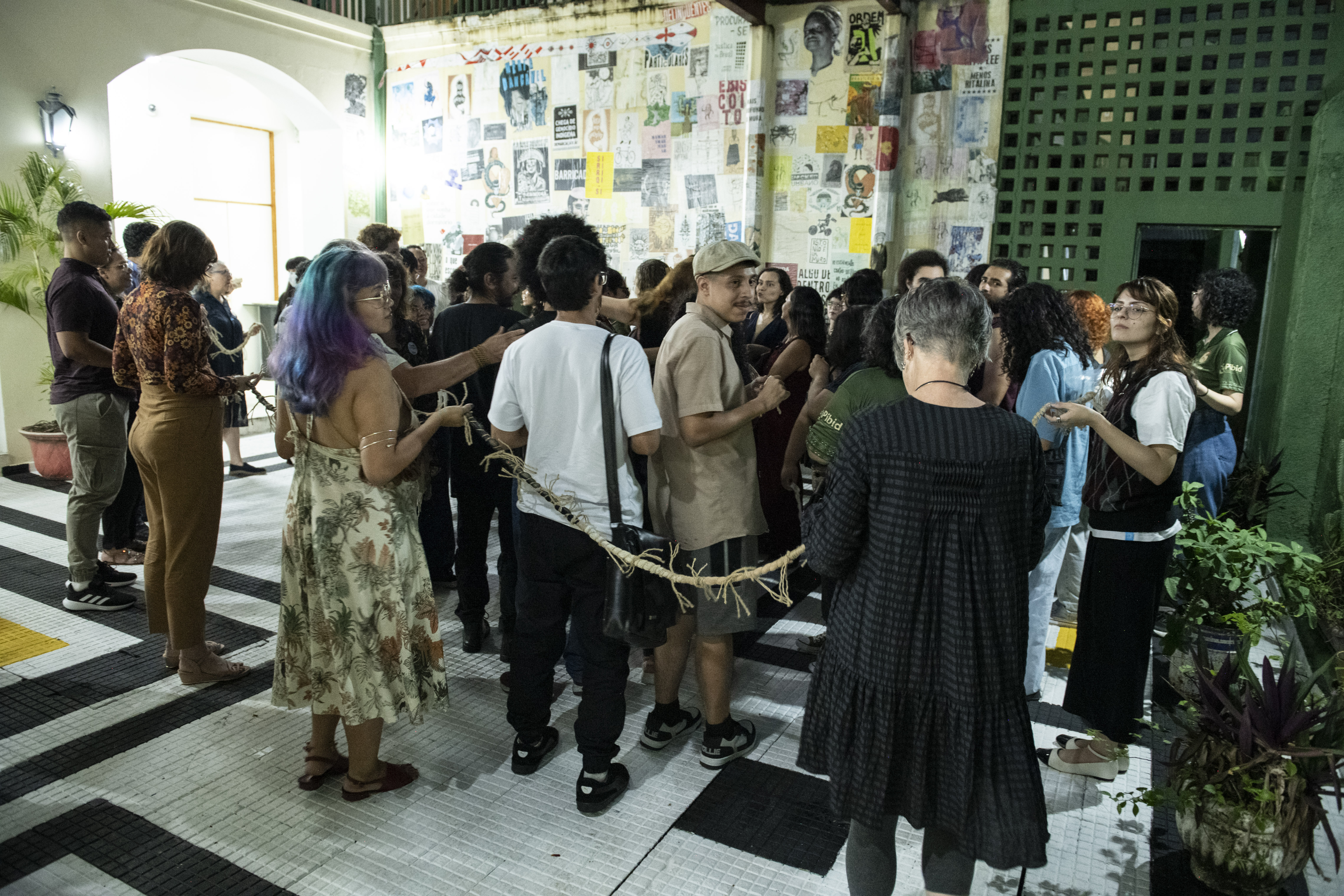Beth Krensky at the art department where activist posters abound, Federal University of Amazonas, Manaus, Brazil (left)
Professor V. Kim Martinez on scaffolding while working on a section of the Great Wall of Los Angeles (right)
WRITTEN BY MARINA GOMBERG
For tenure-line faculty members at the University of Utah, research is part and parcel to the work. In addition to disseminating information, our researchers are hungry to explore, create, recreate, discover, analyze, and publish.
This pursuit of new knowledge is an important pillar of what faculty members at universities provide to their students, their communities, and the world at large.
Recognized by the Carnegie Classification of Institutions of Higher Education, the University of Utah has the highest classification for research activity, designated as an R1. And the faculty members in the College of Fine Arts add to the body of creative and scholarly research profoundly.
Arts research — the generation, discovery, application, and integration of knowledge — takes many forms. It’s the premiere of a new choreographic work. It’s arts teaching and learning. It's a new opera or symphony. It’s the set design of a play. It’s a mural made in and with community. It can also be distributed through traditional forms like textbooks, book chapters, research papers, and studies.
While the hum of research can always be felt and heard in the College of Fine Arts, the frequency and volume is amplified when faculty members apply for and are granted the unique gift of focus in the form of sabbatical leave.
The overall purpose of sabbatical leave is to increase faculty members’ scholarship and professional development by temporarily suspending teaching duties, thereby enhancing their capacity for continued research, teaching, and service. Leave of this type from academic duties is a privilege granted to afford the faculty member the opportunity for intensive study, investigation, and research.
Upon reflecting on her successful sabbatical, Associate Professor Kimberly Jew said it well: “I think what made the sabbatical work so well for me is that I had time to reflect on my writing projects. I had a bit of room inside my head to let ideas, questions, and thought process bounce around joyfully. It's truly a privilege to have time to think. Also, thinking and writing are inextricably connected: the more you think, the more you write, and the more you write, the more you think.”
We often get to see the fruits of our faculty members’ teaching endeavors, but this story goes beyond the classroom and studio. Here, we are getting a glimpse of the life and times of our faculty through their unique sabbatical experiences.
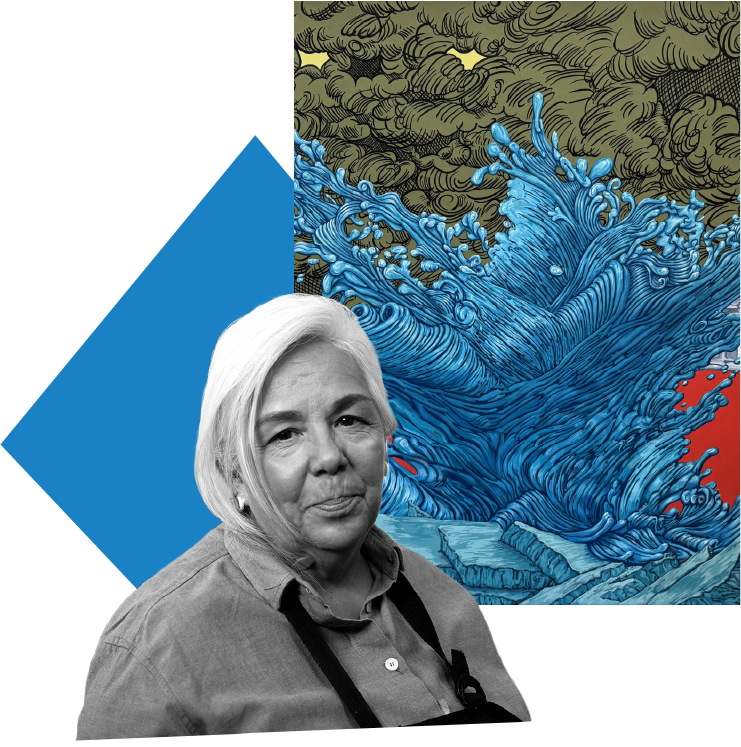
Professor V. Kim Martinez, Photo courtesy of V. Kim Martinez (left)
Detail of “Blood Falls” by V. Kim Martinez, 4’x4’ painting about Antarctica and climate change, completed while she was in Los Angeles (right)
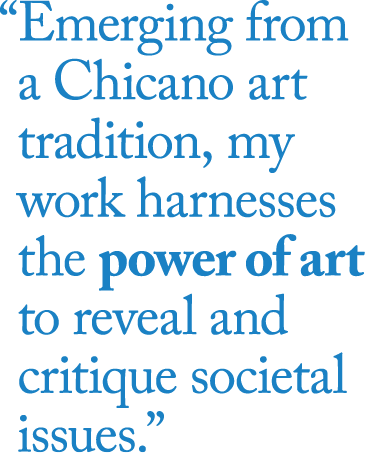

Renowned muralist and painting and drawing Professor V. Kim Martinez is known for her large-scale, community-focused works that both involve and reflect the communities in which they exist. So, during her sabbatical from fall 2024 through spring 2025, she traveled the country from coast to coast in pursuit of connecting, making, learning, and ultimately using art as a mechanism for social change.
“Emerging from a Chicano art tradition, my work harnesses the power of art to reveal and critique societal issues,” Martinez said in an interview with Utah’s arts magazine, “15 Bytes,” before she had left for the residency. “My creative process is rooted in inquiry; I begin by posing critical questions that propel me on a journey of research and direct engagement with the individuals whose stories I aim to tell, employing iconography and symbols that resonate deeply within that context.”
Fueled, in part, by the University of Utah’s Presidential Societal Impact Scholar Award, Martinez completed two artist residencies, one in New York City with JVS Project Space and one with Los Angeles’ 18th Street Art Center.
The latter of which had two foci. The first was to create works for her series, “Tantalus,” which vibrantly reflects the impacts of industrial and human pollution. The 13 smaller pieces she created in L.A. reflect the floods’ devastating impacts and embody the human resilience it will take to address them.
Her second focus was collaborating with the SPARC LA design team on new sections of the Great Wall of Los Angeles, the mural project started by Judith Baca in the 1970s that portrays the perspective of women and minorities. Martinez was able to both submit designs and collaboratively paint on sections designed by others, all while learning about new techniques and materials that she can bring back to the U and employ with her upcoming student mural project for Murray City.
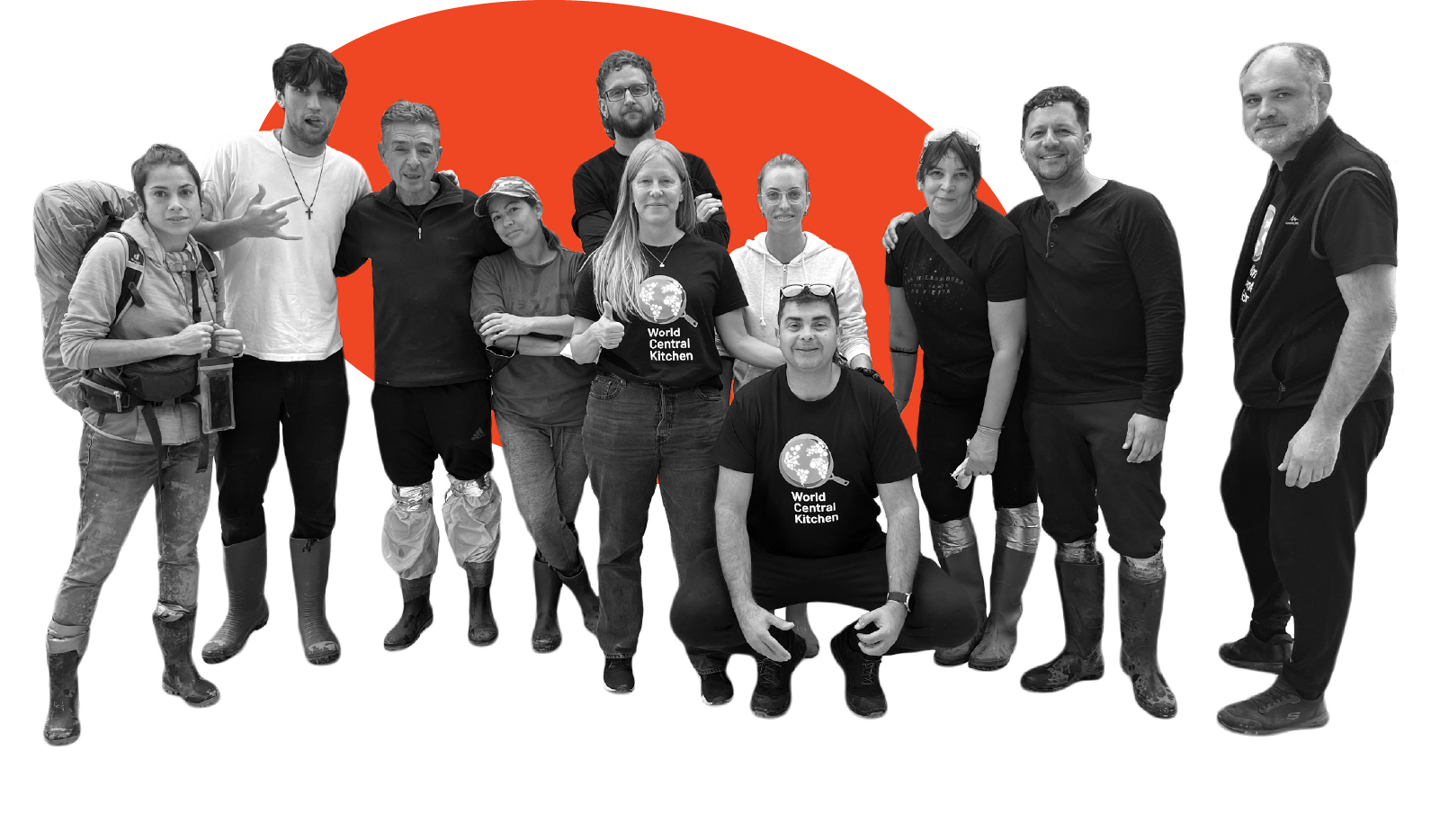
Hummasti volunteering in the town of Catarroja after the flooding
Photo courtesy of Satu Hummasti

Hummasti at the showing of “Shore / Baltic” in Åland at the Kõkar Museum
Photo courtesy of Satu Hummasti
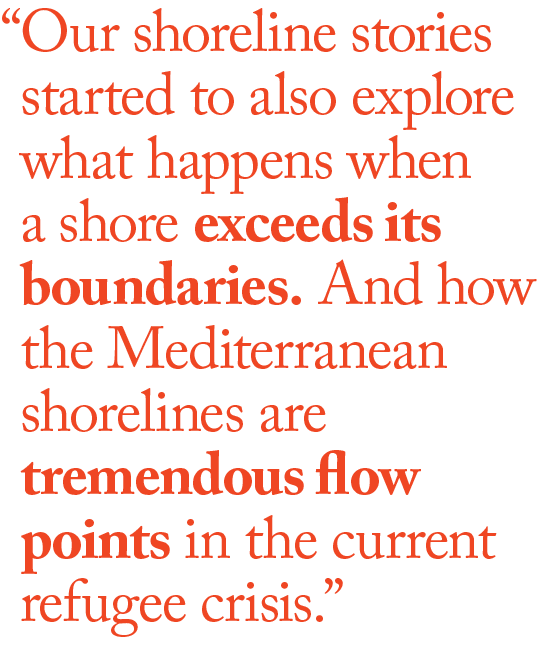

With the intention of developing a work called “Shore” that explores the changing relationship of our human bodies of water with earth’s bodies of water, Associate Professor Satu Hummasti, who teaches contemporary dance and choreography in the School of Dance, set off around the world for her yearlong sabbatical in fall 2024.
The interactive, multidisciplinary work includes dance, film, and installation and investigates our interdependence with water and coasts through a lens of arts ecology and sustainability, like much of Hummasti’s work.
“Shore” involved filming “small dance stories” and interviews with local people at various shoreline sites that hold personal and historical significance, with the intention of the project culminating in dance, film, and sound installation that involves multiple, simultaneous projections depicting these embodiments of “shore."
Hummasti began in the Nordic region, where she had a three-week guest artist residency at the Åland Archipelago Guest Artist Residency in Åland. The residency culminated in her showing “Shore/Baltic,” a first iteration of the project, at the Kökar Museum.
She then moved to Valencia, Spain, where she continued working on “Shore” and researching dance and improvisation as modalities to foster UN Sustainable Development Goals, particularly in relation to climate and social justice. Valencia was Green Capital of Europe 2024, so the move there, and working with institutions like the Observatorio del Canvi Climactic, gave important viewpoints to the project.
But on Oct. 29, 2024, everything changed when an historic flood devastated the region. Hummasti found herself living the phenomenon she was researching: the effects of climate change on human life. Bodies moving to help other bodies, this time though, in differently choreographed ways. She joined the thousands of volunteers — specifically working with the international group called Batallion Guirri and with World Central Kitchen — in destroyed villages, many of which were home to refugees from neighboring regions who had fled violence and sought safety.
Her flexibility to pivot ultimately expanded her preview on the topic.
“Our shoreline stories started to also explore what happens when a shore exceeds its boundaries,” Hummasti said. “And how the Mediterranean shorelines are tremendous flow points in the current refugee crisis.”
Plans to create and present “Shore” continue, and for Hummasti, new ideas around “Improvisation in Times of Disasters” have become a new focus.
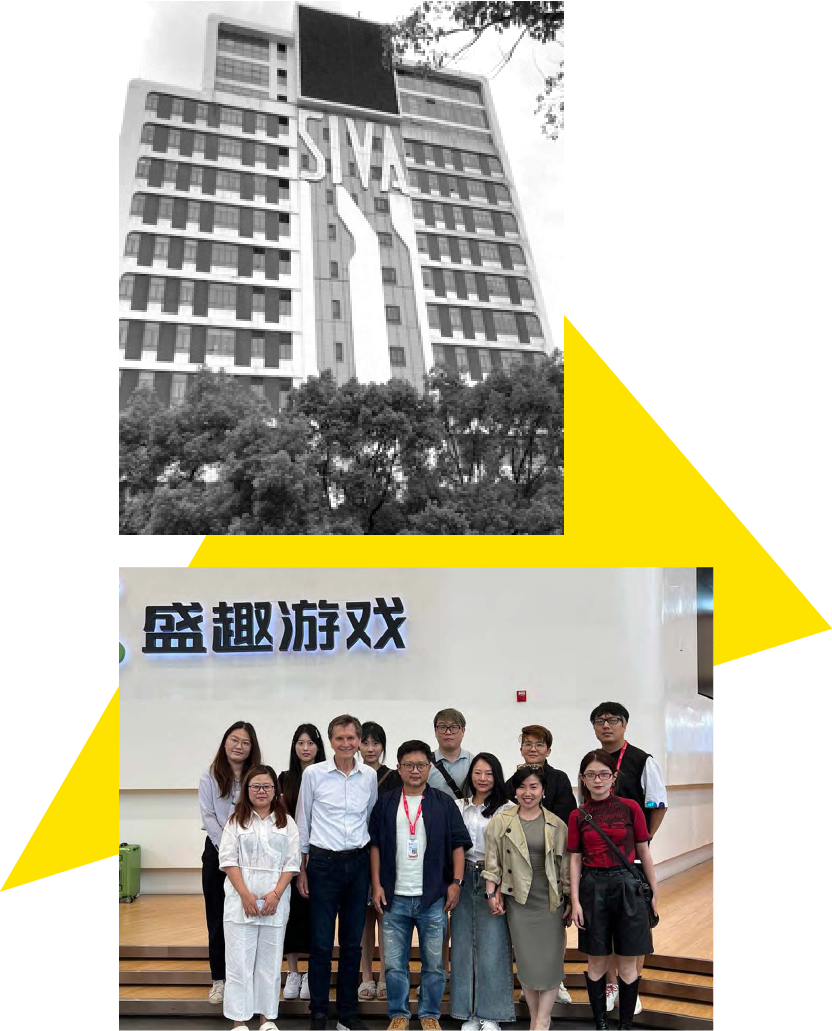
Shanghai Institute of Visual Arts (top)
Caldwell at Shengqu Games (bottom)
Photos courtesy of Craig Caldwell
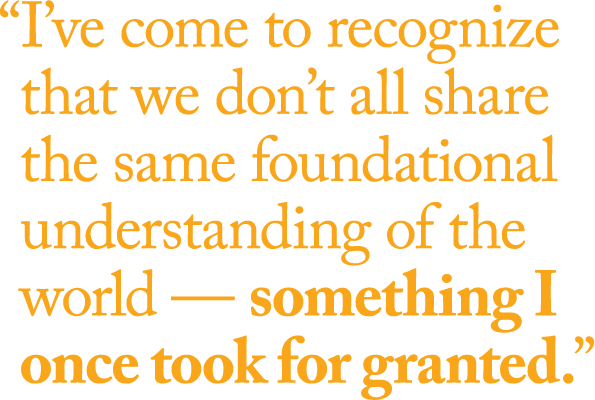

From industry to academia, animation Professor in the Department of Film & Media Arts, Craig Caldwell, has been a groundbreaker. In addition to his role in the College of Fine Arts, he is a USTAR (Utah Science Technology and Research initiative) professor and co-founder of the Masters in Entertainment Arts & Engineering in the U’s Games program. He now lends his focus to better understanding how “an audience’s cultural storytelling traditions influence their response to a film’s narrative.”
Caldwell's sabbatical's goal was to illuminate how our Western/Aristotelian narrative tradition, with its emphasis on individual, character-focused stories, differs from Eastern narratives, which are more about character relationships (Kishōtenketsu).
His sabbatical, which spanned from fall 2022 through spring 2023 with the support of funding from the Institute of Animation and Creative Content (IACC) at the Shanghai Institute of Visual Arts (SIVA), provided fodder for both his research and, in surprising ways, his teaching. Collaborating with IACC provided introductions to some of Shanghai's cutting-edge digital media companies (i.e., Tencent, Shengqu Games, Pearl Studios) and ranked universities (Tongji University).
Though the pandemic shifted his initial plans to stay based in China longer, Caldwell's absorption of knowledge during his visit was monumental. After speaking at European conferences on the differences in narrative structures due to cultural influences, he returned home to get a jumpstart on the second edition of his book "Story Structure and Development: A Guide for Animators, VFX Artists, Game Designers, and XR Creators" (Taylor & Francis/CRC, 2025).
In addition to being a more informed researcher on media narratives, Caldwell sees how his deeper cultural understandings will influence how he relates to and shares knowledge with his students.
“I’ve come to recognize that we don’t all share the same foundational understanding of the world — something I once took for granted,” he said. “Our perspectives are shaped by different experiences and levels of background knowledge. As a result, I’ve become more intentional about clarifying concepts I used to assume were universally understood.”
Leave it to a film professor to capture the importance of lens.
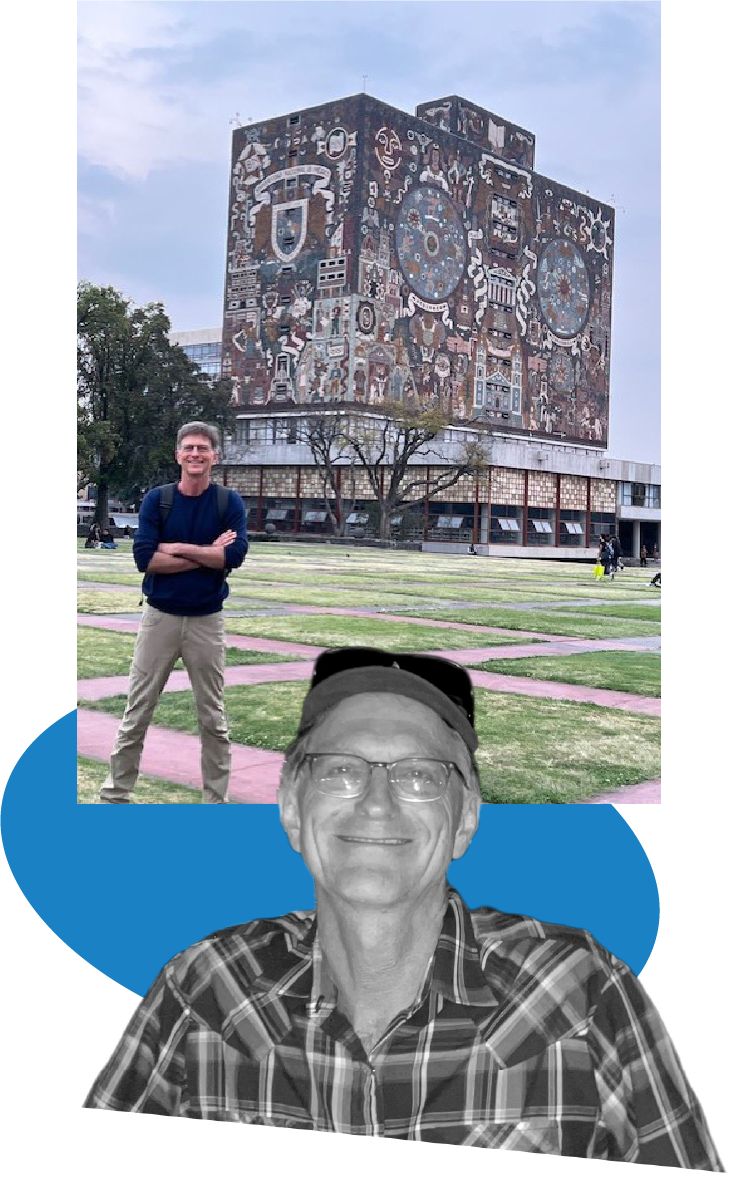
Lippard in front of the library at UNAM (top)
Lippard in London (bottom)
Photos courtesy of Chris Lippard
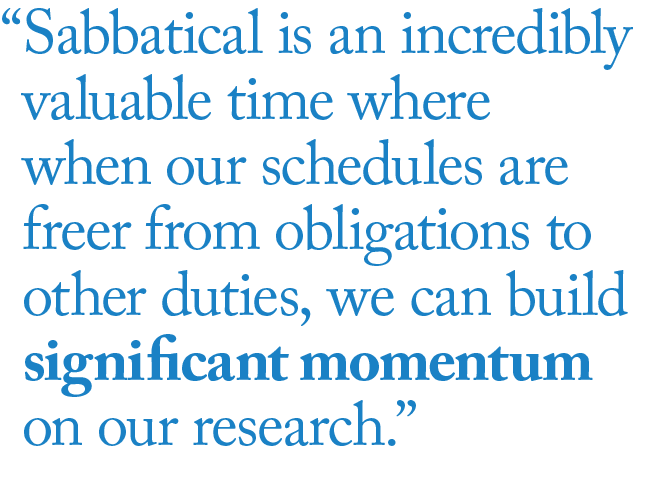

Film & Media Arts Professor Chris Lippard has always been interested in better understanding the human condition, and film — especially film as a component of a larger interdisciplinary investigational projects — is one of the ways he’s explored the parts of humanity that interest him most.
His PhD dissertation in the mid 1990s focused on the impact of pain on creativity, and he has continued to find ways to investigate the complex relationships between human struggle and media.
During his two-semester sabbatical (fall 2024-spring 2025), which was funded by the College of Fine Arts, the Middle East Center, and the Center for Latin American Studies, Lippard dove deeply into research around the plights and portrayals of migrant humans, the understanding of how borders and mobility influence movement, and the ways we show the human experience through portrayals of animals in film.
He also remained steadfast in his service to the book series “Cinema and Media Cultures in the Middle East” for which he is the editor; as he is and has with the “Journal of Contemporary Iraq & the Arab World.”
“Sabbatical is an incredibly valuable time where when our schedules are freer from obligations to other duties, we can build significant momentum on our research,” he said.
And though it wasn’t scheduled to fit this within the magical sabbatical window, Lippard plans to travel to refugee camps in northern Africa in October to follow up on his previous research on the visual culture of the vibrant Sahrawi people.
Krensky walks a labyrinth in Oregon for her performance "The Trees Will Love Me and the Earth Will Hold Me". (left)
Photo: Matte Hanna
Krensky carrying an interactive social sculpture at the opening of the “Adaptation” exhibition at the Federal University of Amazonas, Manaus, Brazil (center)
Photo: Courtesy of Beth Krensky
Krensky engaging with art education students at the Federal University of Amazonas, Manaus, Brazil (right)
Photo: Courtesy of Beth Krensky
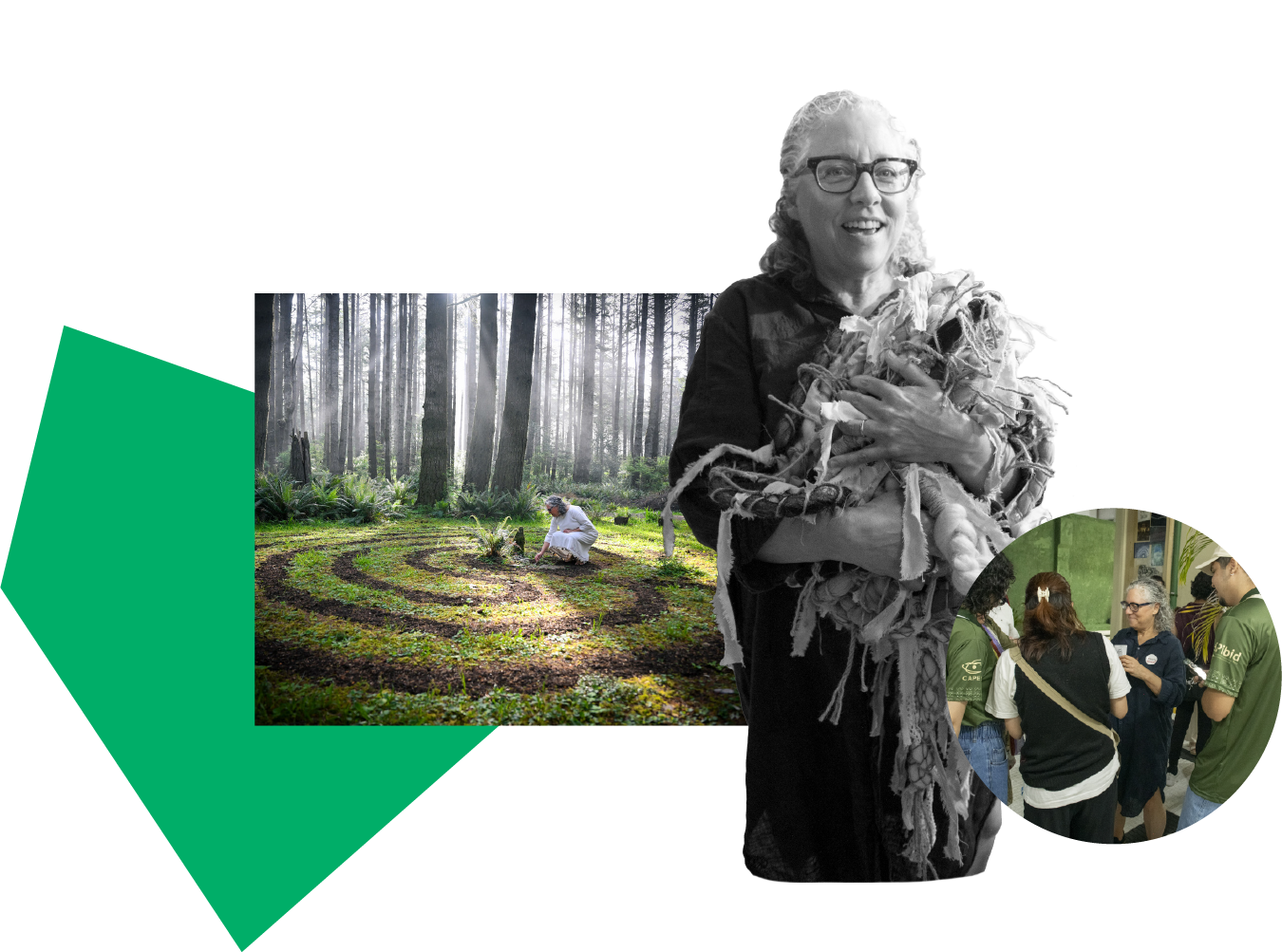
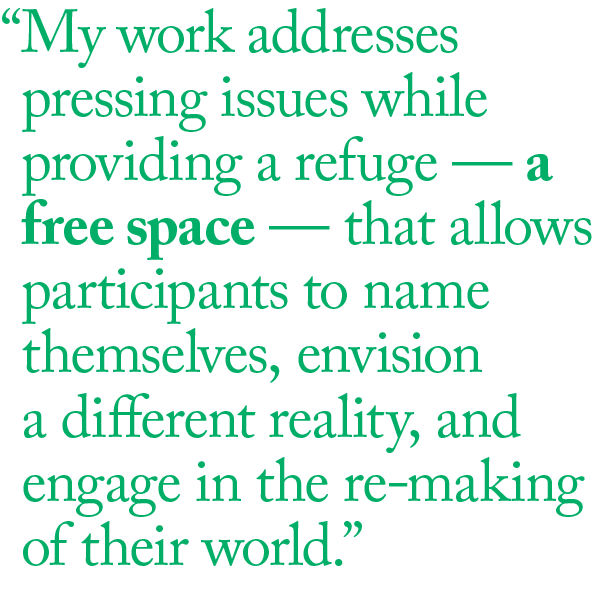

One can sometimes find Distinguished Professor in the Department of Art & Art History, Beth Krensky, with a chair strapped to her back as she makes a pilgrimage — not necessarily for show (though, the lucky get to witness), but as an act of love aimed at creating healing and wonder.
“I am a gathering of things — objects, words, spirit — and connector of fragments, to make us whole,” she said.
During her sabbatical, which spanned from fall 2024 through spring 2025, Krensky traveled around the world and across the country to exhibit and speak. She also began the process of telling the stories of her life’s work using art as “a form of individual, interpersonal, or community liberation.”
Her research agenda is dedicated to creating art — some performance-based, some multi-media, and others tactile — that facilitates collective experiences as contemplative acts. A deep believer in the importance of using the arts as forces for love and healing, Krensky is invited to share her work all over the world.
Her series “Dispatch from Solitude” has faced questions about life and the courage required to investigate the spaces where spirit and matter connect. The latter was the focus of her recently completed “Dispatch from Solitude #3: Pilgrimage to the Very Center,” which was a solo performance of her walking a labyrinth on the ancestral lands of the Tutuni people in Port Orford, Oregon.
“My work addresses pressing issues while providing a refuge — a free space — that allows participants to name themselves, envision a different reality, and engage in the re-making of their world,” she described.
She also recently returned from Manaus, Brazil in the Amazon, where she had work in the “Adaptation” exhibition and gave a talk entitled, “Social Practice Art: Art as Life” at the Centro de Artes at the Federal University of Amazonas (UFAM). She also got to spend time with the students and faculty at UFAM, an institution that educates students from all over the Amazon, many of which are indigenous, to return to their communities to teach.
With her medium of love, Krensky’s art is a matter of heart and soul.
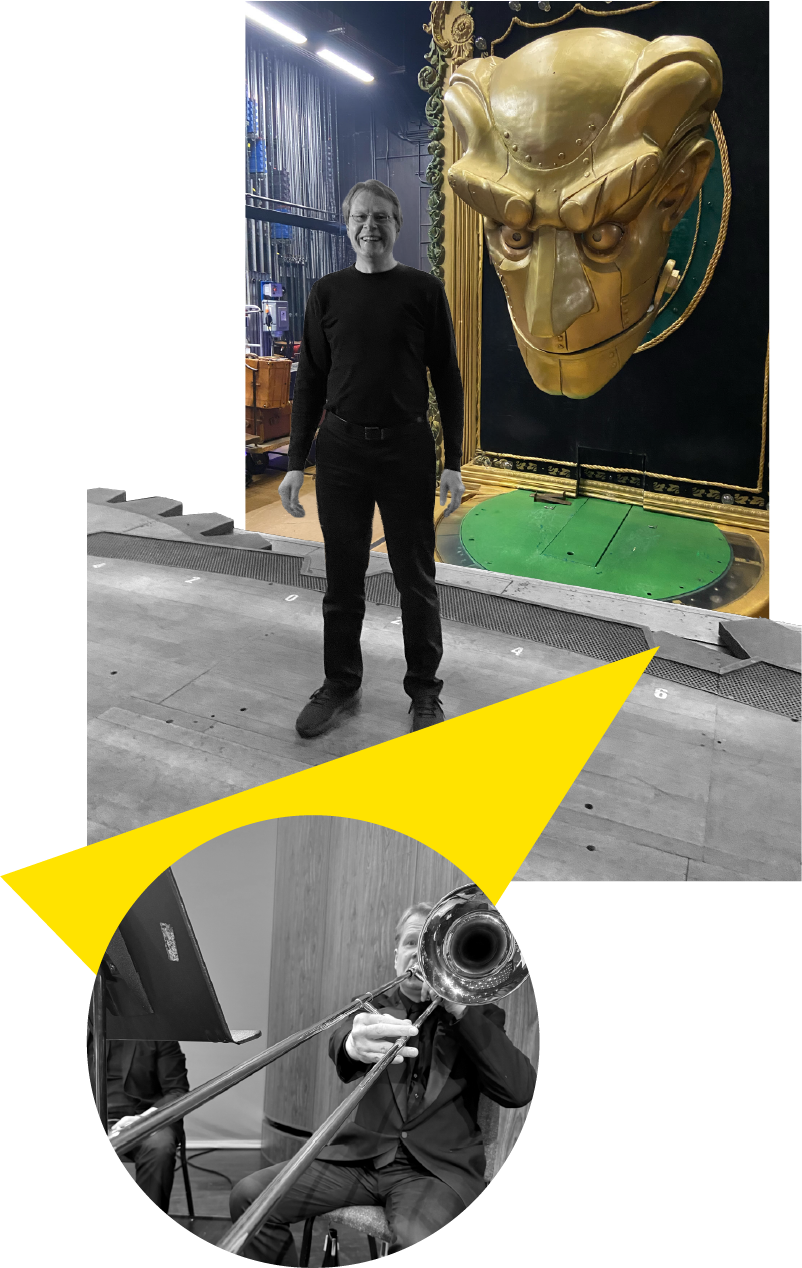
Photo montage of Donn Schaefer on on the stage of the Eccles Theatre (black and white) and behind (color) is the Wizard from the Broadway tour of "Wicked." (top)
Schaefer performing with the Utah Symphony (bottom)
Photos courtesy of Donn Schaefer
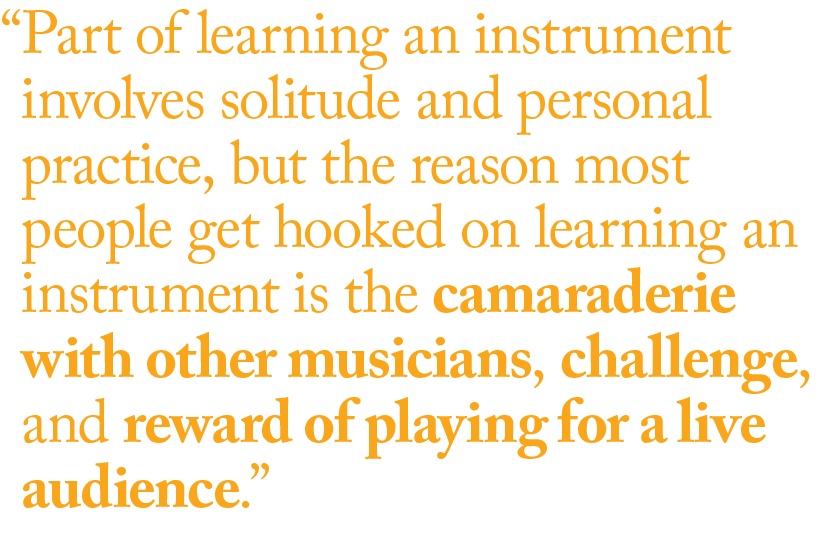

If we may toot his horn, Professor of trombone and head of the School of Music’s brass area, Donn Schaefer, was on sabbatical leave from fall 2024 through spring 2025, and made incredible use of his time.
From playing on three Broadway National Tours (“Funny Girl,” “Mrs. Doubtfire,” and “Wicked,”) and with the Utah Symphony Orchestra, the University of Oregon and the New York City Electroacoustic Music Festival, Schaefer immersed himself in the best of our local and national professional music opportunities, all of which provided fodder for him to be a better teacher, he says.
“Part of learning an instrument involves solitude and personal practice, but the reason most people get hooked on learning an instrument is the camaraderie with other musicians, challenge, and reward of playing for a live audience,” he said. “We need constant reminders of live performance to be able to relate to and inspire our students as they journey on their path towards being performing musicians.”
From the actual act of playing alongside prestigious professionals on tour, to experiencing the uses of new technologies, personally knowing what is happening in the professional space makes Schaefer an even greater asset to his students.
And in addition to his work as an active performer, he lent his time and energy to writing "Going Low: A Complete Guide to Switching to Bass Trombone” (working title), which will be a pivotal contribution to the field since everybody starts on the tenor trombone before taking up bass trombone, which is, as he says, “a completely different beast.” This milestone is one many players move through, but Schaefer’s text will be the first published on the topic.
Upon returning to teaching duties, it’s fair to say that Schaefer will be fine-tuned and ready to hit the right note.
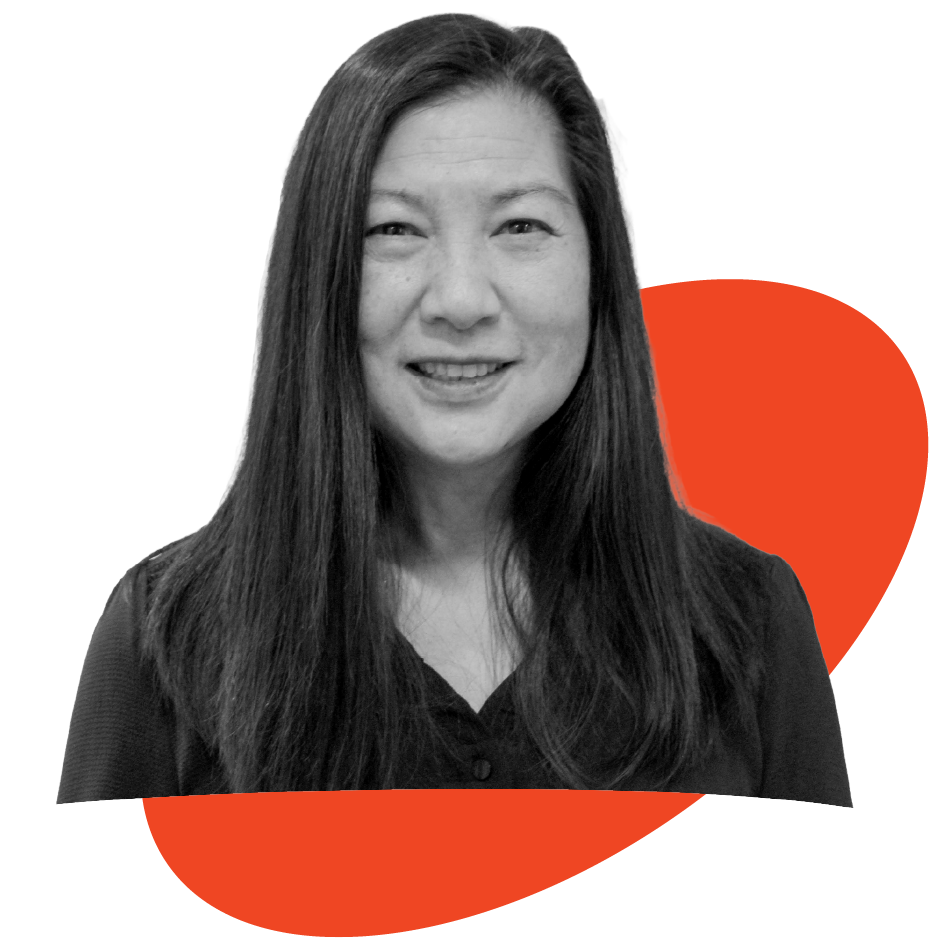
Kimberly Jew
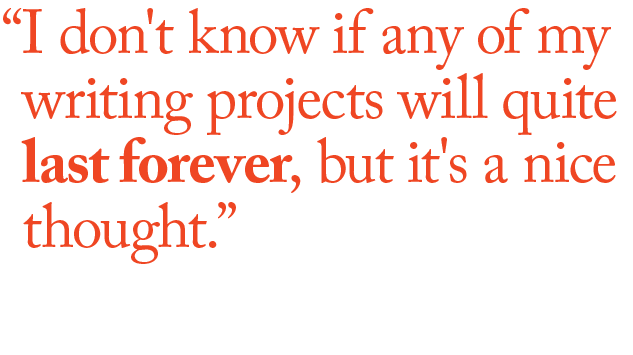

It would be reasonable to assume, with as many hats as she wears and as much as she produces, that Associate Professor Kimberly Jew has a sizeable head. With remarkably gentle ego, though, she holds appointments in both the Departments of Theatre and Ethnic Studies and has managed to publish four unique articles during her sabbatical leave during the 24/25 academic year, among other accomplishments.
If we think about theatre as an exercise in portraying humans that are not us and stories that are not always ours, it makes sense that success often requires theatre-makers to investigate and understand the cultural context of a character’s existence. These processes are important for accuracy, respect, and legitimacy, and Jew has long written on a variety of topics exploring the intersections of feminism, postcolonialism, theatrical experimentation, and ethnic identity.
With pieces in “Frontiers, a Journal of Women Studies,” “Theatre and Performance Notes and Counternotes,” “Pacific Coast Philology” (PAMLA Journal), and “The Routledge Guide to Absurdist Literature,” Jew has been able to add valuable contributions to the important intersection of theatre, form, and identity.
She was also contracted to co-edit a large 40-essay volume of theatre and dance essays, focusing on women's leadership in the performing arts. The volume, titled, "Volume 4: Leaders" is part of a 4-part series titled “Women’s Innovations in Theatre, Dance, and Performance” which will be published by Bloomsbury Press.
And in her spare time, she was also part of producing the play “White Rabbit/Red Rabbit” at the Salt Lake Acting Company (Making Space for Artists), which is an experimental play by Iranian playwright Nassim Soleimanpour that invites non-actor community members to participate with no rehearsal or direction. She’s planning to direct Lauren Yee's “The Hatmaker's Wife” at Westminster University this coming fall.
She deeply valued the chance to think and write while sitting alongside her convalescing father, a workaholic surgeon who had been her inspiration to become a professor when she was young and struggling. He once wrote a letter to her during her graduate school days that the chance to write an article, book, or play was absolutely worth pursuing because the writing would last forever.
“I don't know if any of my writing projects will quite last forever,” she said. “But it's a nice thought.”
She’s right. It’s unclear how long these faculty members’ contributions to the world will last; knowledge, interpretation, art-making, and texts ultimately shift like the desert sands. But it’s abundantly clear just how impactful these efforts are right now and, hopefully, for the foreseeable future.


